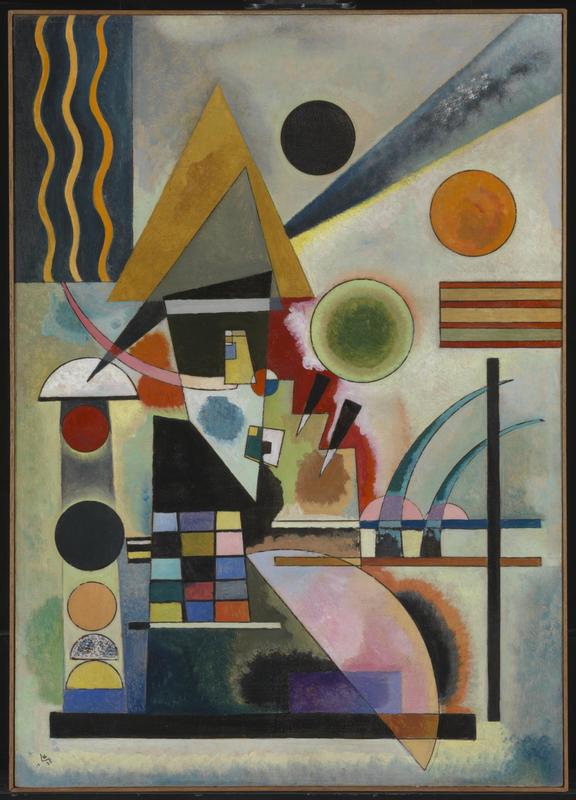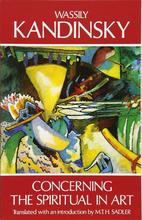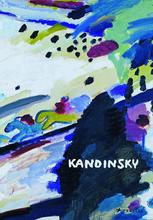More about Swinging
- All
- Info
- Shop

Contributor
If you’re at all confused as to what this painting is supposed to be depicting, Kandinsky might have told you you’re being too literal and bringing him down.
It's true Kandinsky once thought “the painter had no right to paint so unclearly,” but then he saw Claude Monet’s Haystacks and lost his sh*t. In a good way. A few decades went by, and wham, you have works like Swinging, in all their abstract glory.
Still confused? It’s likely the K-man thought of paintings like Swinging as abstract representations of music. “Swinging” could be a reference to rhythm, that of a song’s beat or the movement of dance. It could also literally be a representation of swing music, a form of music which was just coming into popularity around the time Kandinsky created this piece.
STILL confused? Me too. Kandinsky was a man of many ideas and passions. Swinging appears right between two notable periods of his style, the former being the architectural period—when his use of shapes became more precise than before—and the latter being the romantic period—when softer colors and concrete, natural images came into the fold. Obviously Swinging belongs more to shapes than romance, but there is certainly something very lively about the piece.
Any attempts to try and pin this mystery down won’t work out too well. Kandinsky himself doesn’t even fit into the normal mode of what we usually call an artist (he was a lawyer until his thirties). He is largely known for his mystical treatise, Concerning the Spiritual in Art, in which he championed color as an artistic liberator, taking us out of the material world and into some pure, fancy place where things make less sense but are more real, I guess. Not long after painting Swinging, Kandinskers wrote a second treatise, Point and Line to Plane, which said a lot of the same things, but now with lines and points. Horizontal lines, said Kandinsky, are cold. Vertical lines are hot. I guess a painting like Swinging would be on fire, then. Man, synesthetes have all the fun.
Sources
- Encyclopedia Britannica Editors. “Swing.” www.britannica.com. Accessed December 27, 2017. https://www.britannica.com/art/swing-music.
- Howard, Annabel. This is Kandinsky. London: Laurence King Publishing, 2015.
- Notable Biographies Editors. “Wassily Kandinsky Biography.” www.notablebiographies.com. Accessed December 27, 2017. http://www.notablebiographies.com/Jo-Ki/Kandinsky-Wassily.html.
- Tate Museum Editors. “Wassily Kandinsky, Swinging.” www.tate.org. Accessed December 27, 2017. http://www.tate.org.uk/art/artworks/kandinsky-swinging-t02344.
- Wikiquote Editors. “Wassily Kandinsky.” https://en.wikiquote.org. Accessed December 27, 2017. https://en.wikiquote.org/wiki/Wassily_Kandinsky.













